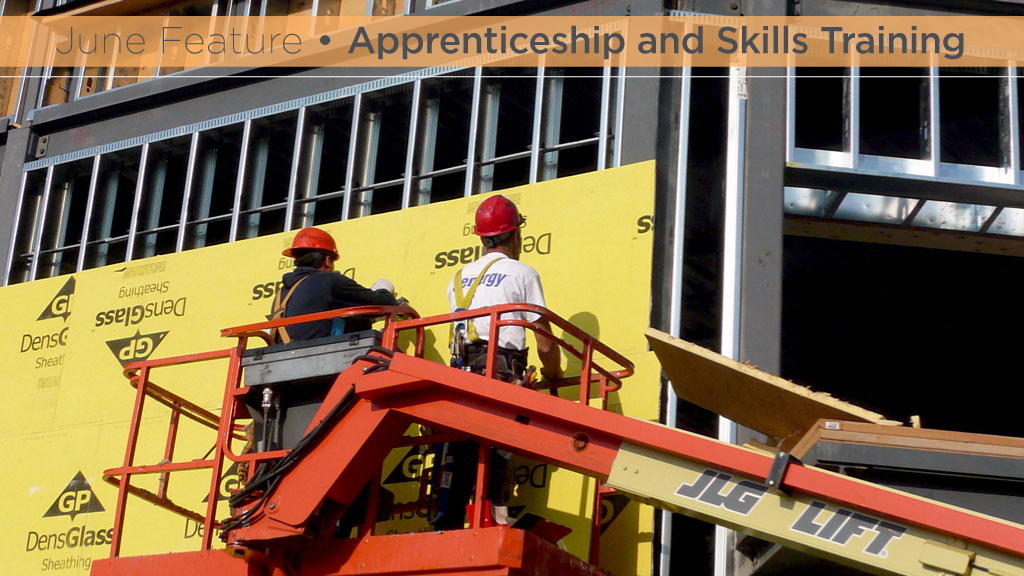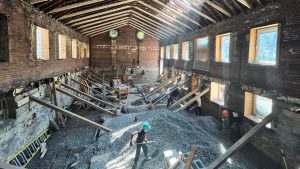Skilled construction tradespeople should be earning more than some Phds, says Monte McNaughton, Ontario’s minister of labour, immigration, training and skills development.
“I always say I need more people in the skilled trades earning more money than the Phds,” says McNaughton, speaking about how to get students streaming into apprenticeships and away from universities.
The need for more apprentices going into the skilled trades has been obvious for some time, he says, but we’re making headway though there are still more challenges ahead.
Less than one-fifth of people who embark upon an apprenticeship program in Canada complete their training within the designated time period, according to a 2021 Statistics Canada study.
What does hold apprentices’ interest, however, is money with higher-paying apprentices more likely to complete their program within a given period of time than those in lower-paying positions, according to one Statistics Canada study.
Still, how long it takes to complete a program isn’t that important, says Cihan Bilginsoy, professor emeritus from the University of Utah who has studied the sector and is poised to issue an annual summary of apprenticeship programs in the United States.
“Completion may be delayed for a variety of reasons and, say, a one year delay should not be viewed as ‘failure,’” he says, noting completion rates are lower in lower paying trades.
The key factor in apprenticeships is how they are inducted into training, Bilginsoy says, with union programs holding the edge over non-union contractors.
“They have the training facilities and the mandate to supply uniformly trained workers,” he adds. “It’s not 100 per cent foolproof but it allows unions to generate a more homogenous body of workers.”
The Associated Builders and Contractors (ABC) in the U.S. says 2022 data shows the percentage of construction industry wage and salary workers belonging to unions dropped to a record low of 11.7 per cent, down from 12.6 the year before.
In Canada, the percentage of union members in trades holds at between 35 to 45 per cent, depending on the province and the trade in 2022. In Ontario the 2016 Census found 26 per cent of Ontario’s total construction industry (residential and non‐residential) workforce (465,710) worked in the unionized sector in 2015.
However, that figure includes many smaller home renovation contractors blended with ICI contractors where generally unionization is about 80 per cent or more.
It’s in the ICI trades where unions hold the strong hand in apprenticeship numbers and that’s led to some friction with non-union contractors who don’t have the formal training programs and facilities the unions have.
Some non-union contractors complain unions play gatekeeper to ensure supply of skilled tradespeople doesn’t exceed demand and force down wages.
One of the changes brought in by the Doug Ford government in Ontario in January 2022 changed the ratio of apprentices to journeymen which made it easier to hire apprentices.
In concert with $1.5 billion over four years invested in programs like Better Jobs Ontario, the Ontario Youth Assistance Program, which provides support for potential apprentices and employers to hire them, there are tangible results, McNaughton says.
Others have also stepped up such as the Schulich Foundation which has created a $3 million scholarship for students looking at skilled trades at 10 Ontario colleges.
“I’m confident momentum is building around skilled trades and we’re making a huge difference,” he says. “New apprenticeship registrations for women is up 30 per cent since last spring and overall there’s been an increase of 25 per cent in apprenticeship registration, so we’re moving the big needle, though we will still need 100,000 more skilled construction workers over the next decade.”
While the intake numbers are encouraging, Adel Esayed, dean of the centre for construction and engineering technologies at George Brown College in Toronto, says the schools also need to modernize to serve those apprentices.
“We need to start intensively introducing new technology into trades schools,” he says, noting the generation coming into apprenticeships are technically literate and ready to embrace digital tools as much as physical tools. “The pandemic showed us that tradespeople are as smart or smarter than post secondary students (in adapting to technology.)”
Efforts over the years — and higher wages out of the gate — for skilled trades have kindled interest among high schoolers and McNaughton notes students in Grade 1 will get exposure to trades as a career path, says Esayed, but there is a lingering stigma among some segments of the population. Until fairly recently guidance counsellors were still favouring university, he says.
“Canadian citizens not so much, but new immigrants don’t like their kids going to trades,” he says. “They think it is for people who have no other options. The kids want to and I have to explain to their parents it’s not like it was in their country because here it’s a good option and you can make a very good living.”
Mike Gallardo, a board member at Skilled Trades Ontario but speaking in his role as president and CEO at Merit Ontario, the non-union contractors association, says it’s something he hears from his members all the time how paperwork can be a drawback.
“Some people do think we should look at apprenticeship programs and look to see whether skills learned in another trade can be transferred to another trade, if they are complementary,” he says. “The biggest challenge is when you talk with prospective apprentices, young or old, they look at the pathway, it’s cumbersome and you have to complete a lot of paperwork which is an administrative burden and turns off a lot of people from the pursuing it, because they look at it and say it’s not as easy as it looks.”
Melissa Young, CEO and registrar at Skilled Trades Ontario, agrees its an area that needs work.
“We’re moving to a digital platform where they can log hours and keep a digital log book,” she says, adding future plans will be to remove silos in the apprenticeship process and reach out much more over the year to raise interest.
Gallardo says the burden of bureaucracy is similar for the employer because the challenge is not just guiding the apprentice through their initial learning, it’s also creating the best environment for safe learning and a culture for training.
On the other hand, some companies don’t want to be burdened. A 2020 survey by the Workforce Planning Board for Sudbury Manitoulin found while employers are looking for a diverse range of skilled construction workers, there was a split between those who were eager to support apprentices and others who wanted no part.
Some would pay their wages while they went to school as part of their apprenticeship and provide other supports while the other group didn’t see it as their responsibility to get involved.











Has Minister McNaughton been tracking apprentice injuries and fatalities in hazardous construction work such as the electrical and residential carpentry trades since Doug Ford loosened apprentice ratios in January 2022?
If so, it’s time to share the injury and fatality data.
If not, why not?
OSHA (US, 2019) states falls were the #1 cause of death and injury on construction sites with Roofers (#3), Carpenters (#4) and Electricians (#5) having the highest number of fatalities amongst all construction workers. Having researched construction death and injury for almost 2 decades, and having taught Occupational Health and Safety to Ontario college students, I know students and apprentices get solid technical and safety training at school, yet the all important, ‘safe work practices’ and training takes place on the job site under the watchful eyes of many seasoned journeymen.
How are we keeping all these new apprentices and new, foreign-trained journeymen/women safe on our busy construction sites?
Professor Gavan Howe PhD Human and Organizational Systems (ret.)